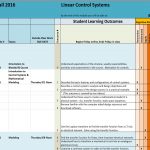Multi-Year Case Study in Blended Design: Student Experiences in a Blended, Synchronous Distance Controls Course
Abstract
This case study combines two primary areas of literature, blended learning and synchronous distance instruction. The literature provides various interpretations and definitions of blended learning. We define blended learning as a classroom learning model that integrates in-person and online asynchronous instruction with reduced time in class. We discuss blended learning with a synchronous distance teaching component that incorporates evidence-based instructional strategies. We explore a specific mode of synchronous distance instruction where the faculty member is physically located with one set of students and other students are connected into the class remotely. In our case study, students are located in two classrooms on two campuses that are sixty miles apart.
